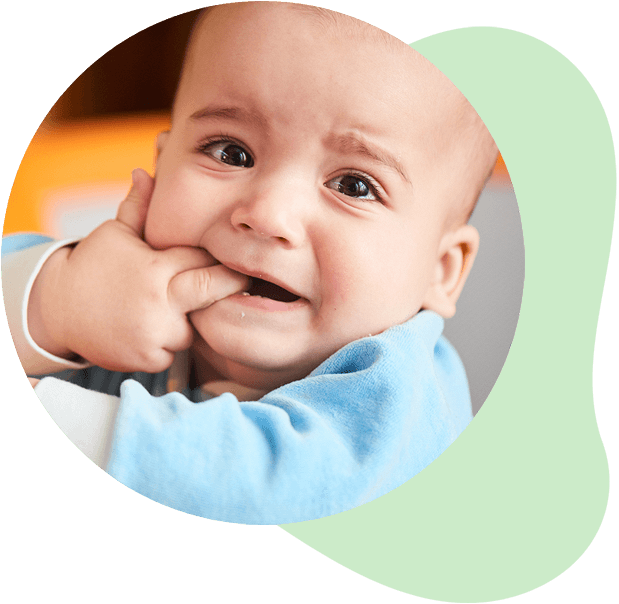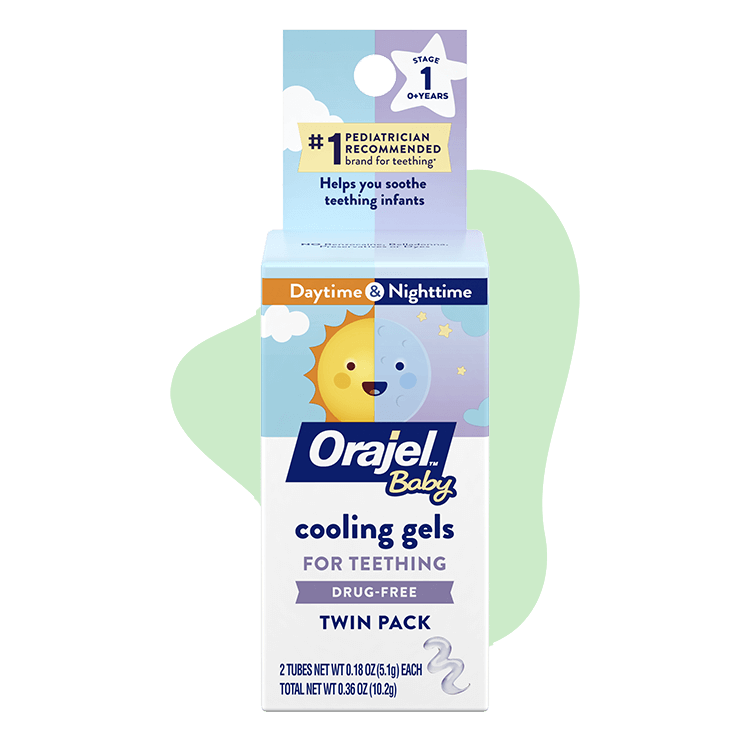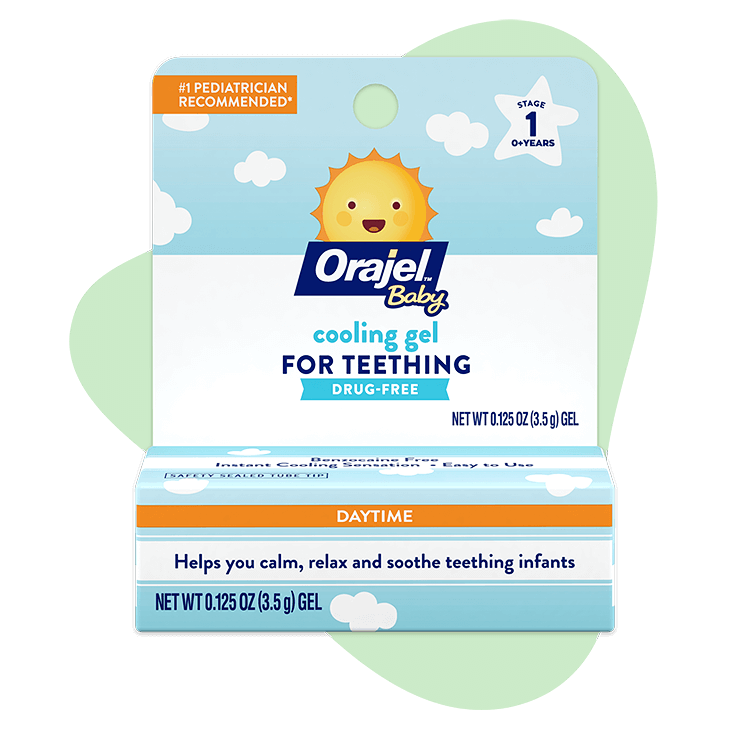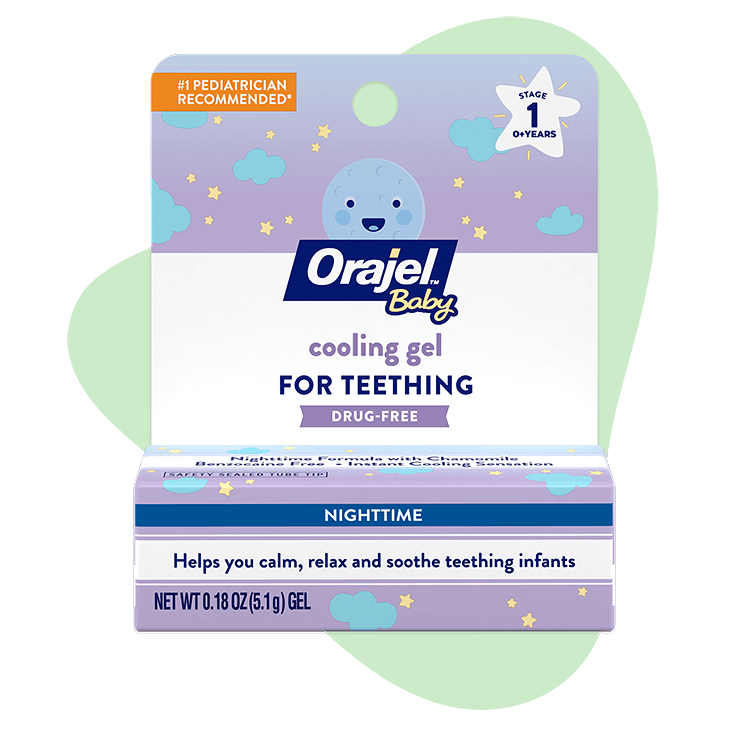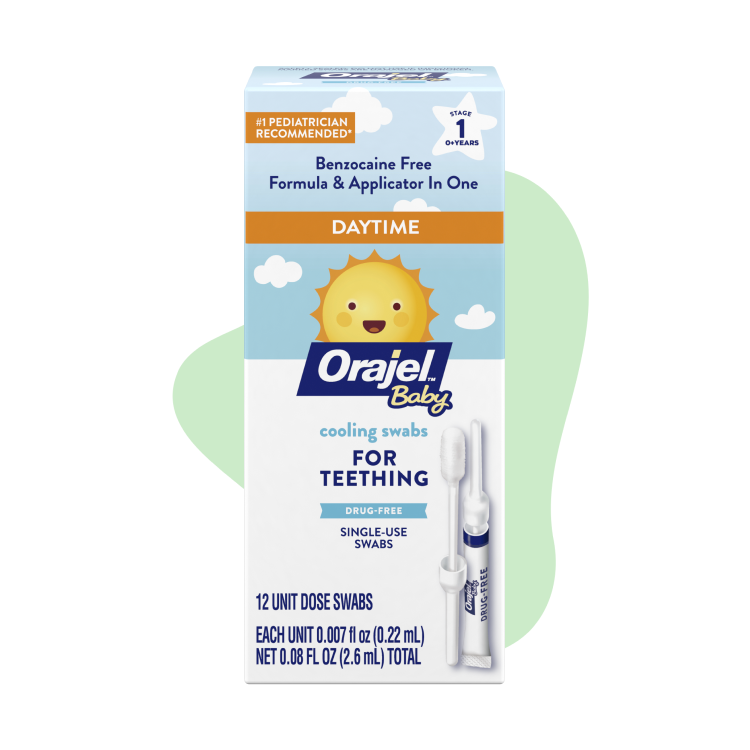Getting a glimpse of your infant’s little tooth after a wide smile can make for a touching and memorable moment. But as a parent, you may wonder, “When does teething start, and how will I know what to look for?”
Every baby’s teething timeline looks different. Nevertheless, you can usually pinpoint when teething has begun, even if you’ve yet to see a tooth break through the gums! We are going to discuss common teething signs and symptoms so you know how to tell if your infant is teething, plus remedies to help comfort your infant.
When to Expect Your Infant to Start Teething
As we’ve mentioned, the baby teething timeline varies from infant to infant. Some babies may start teething as early as 3 months. Others may not get cutting teeth until closer to 12 months. On average, though, infant teething often begins around 6 months.
Just as it helps to have background on teething symptoms, it’s also valuable to have a bigger picture of what the teething process looks like from start to finish. Read up on the baby teething timeline so you can level-set in terms of expectations and make necessary preparations for your infant’s teething journey!
How to Tell if Your Infant is Teething
Spotting the first set of milk teeth breaking through the gums may help explain some of your infant’s fussiness. But since teething can begin before your infant starts cutting teeth, you should understand some common teething symptoms. Signs of a teething infant may include:
- Swollen or tender gums
- Increasingly bringing hands to the mouth or gnawing on objects
- Greater tendency to suck on things
- Mild teething fever
- Runny nose
- Excessive or increased drooling
- Sudden change in appetite or decrease in hunger for solid foods
Knowing the above teething symptoms can help you stay ready so you can comfort your infant when the process begins. That’s one way to help ease some of the teething discomfort—which in turn can help give you, the parent, a much-needed reprieve from whining and fussiness!
How to Help a Teething Baby
Is your little one giving you fits of fussiness? Or, perhaps you noticed their growing tendency to suck or gnaw on your fingers when you’re trying to have a cute moment with them? Now that you know some notable teething signs and symptoms, here are some strategies to help soothe and comfort your teething infant.
Use Orajel™ Baby Teething Products
When you’ve spotted teething symptoms, turn to Orajel™ Baby Teething Gels, Swabs, and Tablets! These products help you to calm, soothe, and relax teething babies.
Orajel™ Baby Teething Gels and Swabs provide your infant with an instant cooling sensation that can temporarily soothe and comfort your teething baby. You can also try Orajel™ Baby Teething Tablets, which come in a dissolvable format.
Plus, all our formulas are benzocaine-free and belladonna-free, giving you an option that works quickly and is safe (when used as directed) for your little bundle of joy!
Try a Home Remedy
Run your hand over cool water or use a wet gauze to rub your infant’s gums. This can help to relieve discomfort from teething. You can also hold a cold or chilled spoon to their gums, just so long as they don’t insist on chomping away at it or treating it like a toy!
Teething Toys
Yes, you can look into purchasing toys specifically geared at temporarily relieving teething discomfort. These may be actual plush toys with fun character connections. You might also consider giving your infant a teething ring—just be sure the ring is not frozen.
So, we’ve talked about some of the ways you can look to help calm your infant during the teething process. Let’s dive a little bit deeper into symptomatic specifics and dispel common misconceptions around teething signs & symptoms.
Does a Fever Always Mean Your Infant is Teething?
Just because your child has a fever does not necessarily mean they are teething. While many parents may establish a linkage between fever and teething, the research is a bit inconclusive. Regardless, if you suspect your infant has a teething fever, you should consult your pediatrician or healthcare provider.
What Does Teething Rash Look Like?
A teething rash can look like small red patches with tiny bumps. Teething rashes will almost always be seen on an infant’s face. And it’s not the teething process itself that causes rashes, but instead, excessive drooling that can dribble onto a baby’s cheek or chin.
Teething rashes are not contagious and typically subside on their own. While babies can experience diaper rash, this is not a symptom of teething! Rather, diaper rash is often caused by skin exposure to wet or soiled diapers and can also be attributed to sensitivity and chafing.
If you notice your infant developing frequent diaper rashes, consult your pediatrician or healthcare provider.
.jpg)
Why is My Infant Drooling so Much?
If your infant is drooling more than usual, it could be a symptom of teething. Teething can result in increased saliva production. Thus, drooling could be a telltale sign that your baby is teething.
We should note that some drooling in infants and toddlers is perfectly normal! When kids find their hands and start to bring them to their mouths, this can also stimulate saliva production. That’s merely a part of your kiddo’s development!
It’s when the drooling seems abnormally high that you should consider whether teething is the root cause. You should also know that colds and allergies can also result in drooling—so keep an eye out for other symptoms if you think your baby is teething.
If your child is indeed teething, break out Orajel™ Baby teething products!
Is Diarrhea a Symptom of Teething?
Although diarrhea is sometimes believed to be a “symptom” affiliated with teething, it is not a verifiable teething symptom.
Your infant might experience diarrhea during the teething process. But that condition is likely to be caused by a stomach virus—which often goes away on its own—or a change in either the baby’s diet or the mother’s diet if breastfeeding. Contact a health professional if your baby is experiencing diarrhea or vomiting.
How Long Does Teething Fussiness Last?
According to some pediatricians, teething fussiness should not last more than a week or two. Some children may display limited or almost zero signs of fussiness when they are teething.
The other element here is that some toddlers may continue teething even after the age of 2, so you should still keep an eye out for any teething symptoms or fussiness you believe may be related to teething. And remember, if teething symptoms are making your toddler cranky, choose a remedy that can help soothe and comfort your kiddo, like Orajel™ Baby teething gels, swabs, and tablets!
Be Wise to Teething Symptoms and Use Orajel™ Baby Teething Gels & Swabs for Temporary Relief!
Tooth eruption is an exciting developmental phase in your infant’s life! Still, the teething process and symptoms associated with teething are things you must navigate. Orajel™ Baby Teething Gels & Swabs provide an instant cooling sensation in a drug-free formula:
- Orajel™ Baby Daytime Cooling Gel for Teething and Orajel™ Baby Daytime Cooling Swabs for Teething can help give your infant (and you!) much-needed reprieve during morning or afternoon hours.
- Orajel™ Baby Nighttime Cooling Gel for Teething can help you soothe teething infants before you get ready to put them down for bed and also includes chamomile.
- Orajel™ Baby Daytime + Nighttime Cooling Gels for Teething is a twin pack that includes formulas for the early or afternoon hours when the sun is still high in the sky, or a nighttime formula when the moon is shining!
- Orajel™ Baby Cooling Tablets for Teething with Vitamin D are dissolvable cooling tablets that help you comfort your teething infant and are also fortified with Vitamin D for healthy tooth support*!
Teething is a natural part of the development process, and it’s important to find ways to limit the stress—both for you and your infant. Choose Orajel™ Baby Teething Gels, Swabs, & Tablets so you can turn frowns upside down and get back to the cuddles and happiness!
*These statements have not been evaluated by the Food and Drug Administration. This product is not intended to diagnose, treat, cure or prevent any disease.


